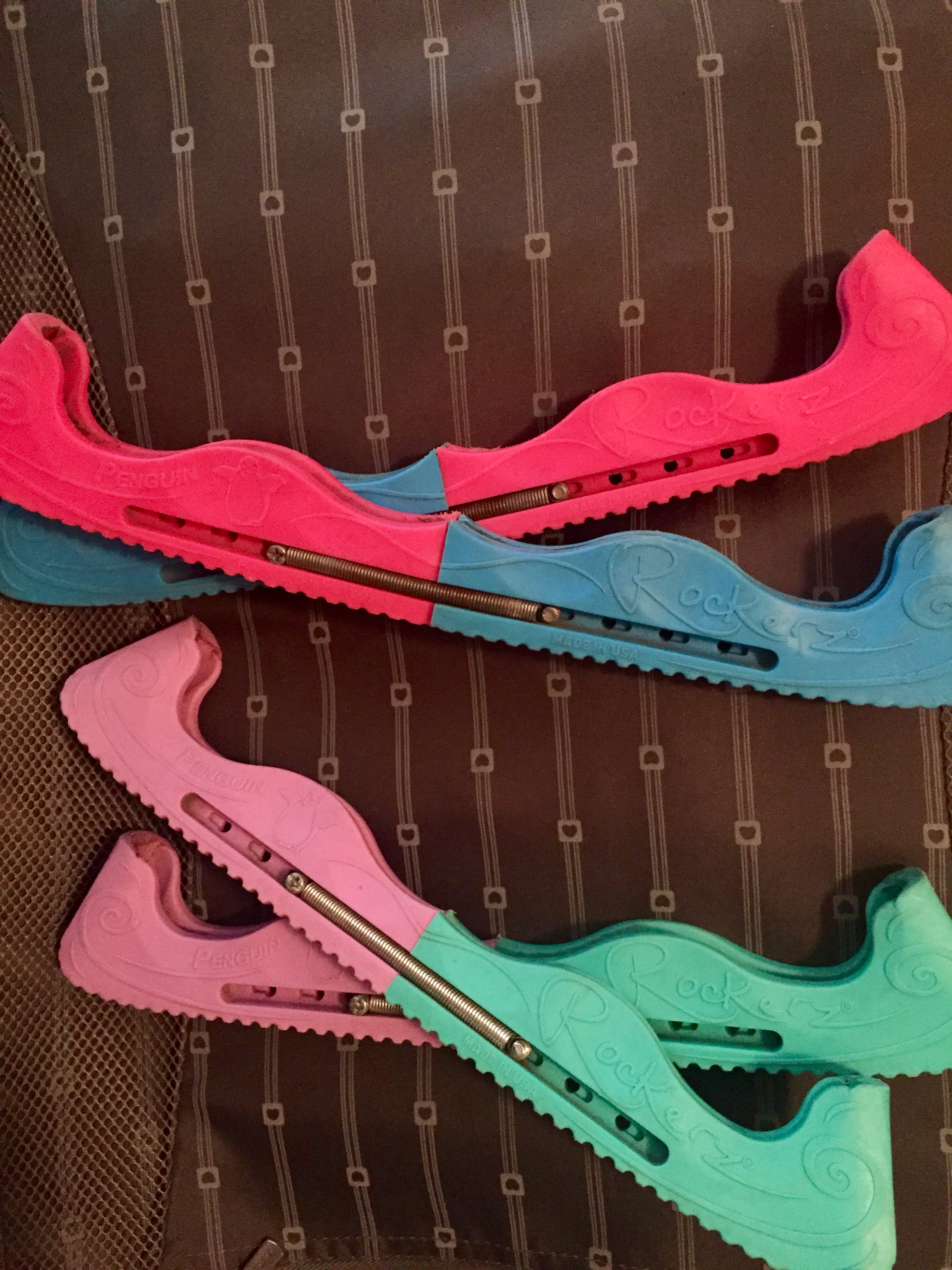It is important to take good care of ice skates, especially when you move from rental skates to your own pair. Skate blades are one of the most important components of the skates as it affects your speed and balance and the precision of your jumps, spins and turns. You should always wear skate guards when you are walking in your skates around the rink and use skating soakers once you've taken off your skates and dried them ready to be packed away.
My skating guards for my freestyle figure skates and ice dance skates
Your blades must be kept dry, clean and safe to prevent any damage. You want to make sure your blades are protected from rocks, metal, cement or wood because they can result in nicks and scratches on your blades. Once your blades are damaged, it will result in uneven skating and negatively impact your performance. To prevent this from happening, you should buy skate guards from any local skate shop or online. A recommended brand would be Rockerz which is what I have and I customized my own guards with different colors. Unless you're on the ice, skate guards should always be worn. The guards will keep your blades shielded and protected. One important thing to keep in mind when it comes to your skate guards is to take them off when you are about to get on the ice. If you forget to take off your guards, it will be impossible for you to stand on the ice. Your skates will slide from under you and you will crash hard onto the ice. Although it's the funniest thing to see, it's quite embarrassing for the person who fell and he/she looks like such an idiot; however, it's bound to happen because we all do it at least once in our lives. When you take the guards off , make sure you carry them with you onto the ice so that you can put them back on the moment you get off the ice. To maintain your guards, you should often clean out the insides because they accumulate dirt and grit over time which can be abrasive to your blades.
My soakers are always on my skates when I'm not on ice and they keep my blades dry and protected
When you're finished skating, you should quickly use a clean absorbent towel to wipe the blades dry to get rid of excess water. Water can lead to rust and deterioration of the metal and once your blades have rusted, it can never hold an edge again. So, it is extremely important to keep your blades dry and avoid water damage. You should definitely invest in skating soakers because they're made of terry cloth and are the best material for keeping blades dry and protected. Even after drying your blades, it will still be wet because the metal blades will be cold and after some time, there will be more water formed from condensate due to the warmer room temperature. The soakers will draw off any remaining water and keeps the blades dry until your next skate. There are some really cute soaker styles out there - besides different colors, there are various animal skating soakers and some even make the sounds of the animals they represent! My soakers are just plain purple which is my favorite color.
The better you take care of your blades, the longer they last. Skates are an expensive investment. When you advance to higher level skating, you will buy your blades separate from your boots and the blades can cost as much as $500-$700! So, it's wise to take good care of your skate blades.


